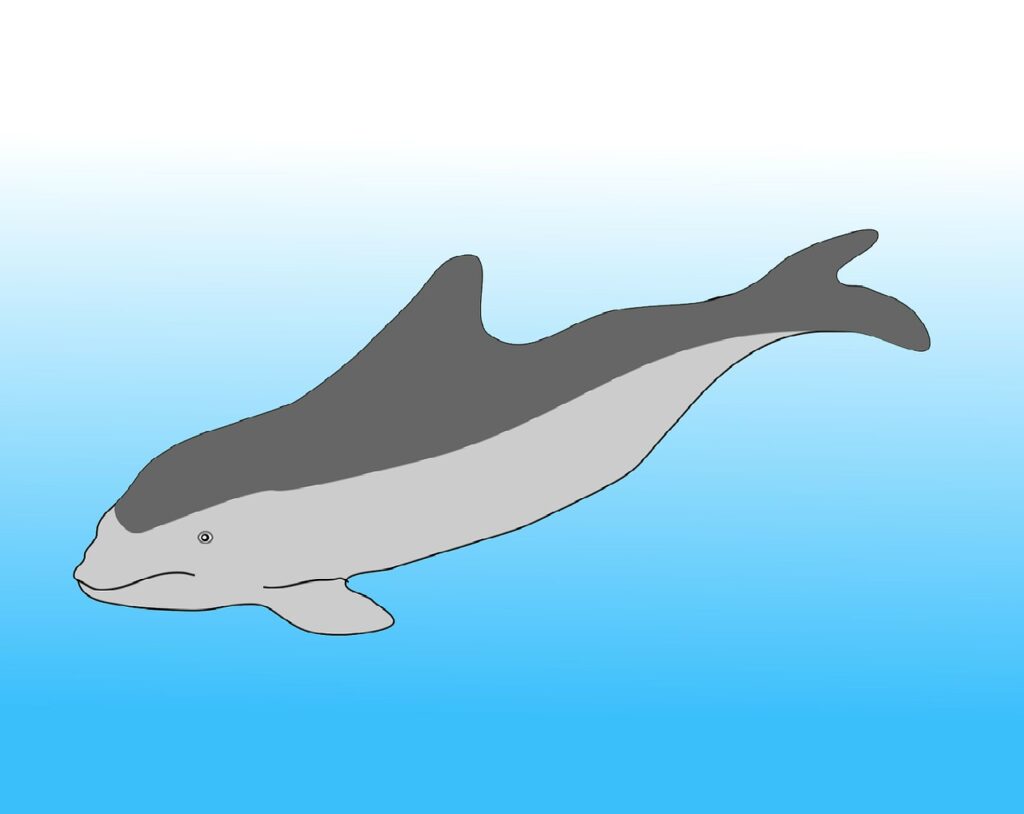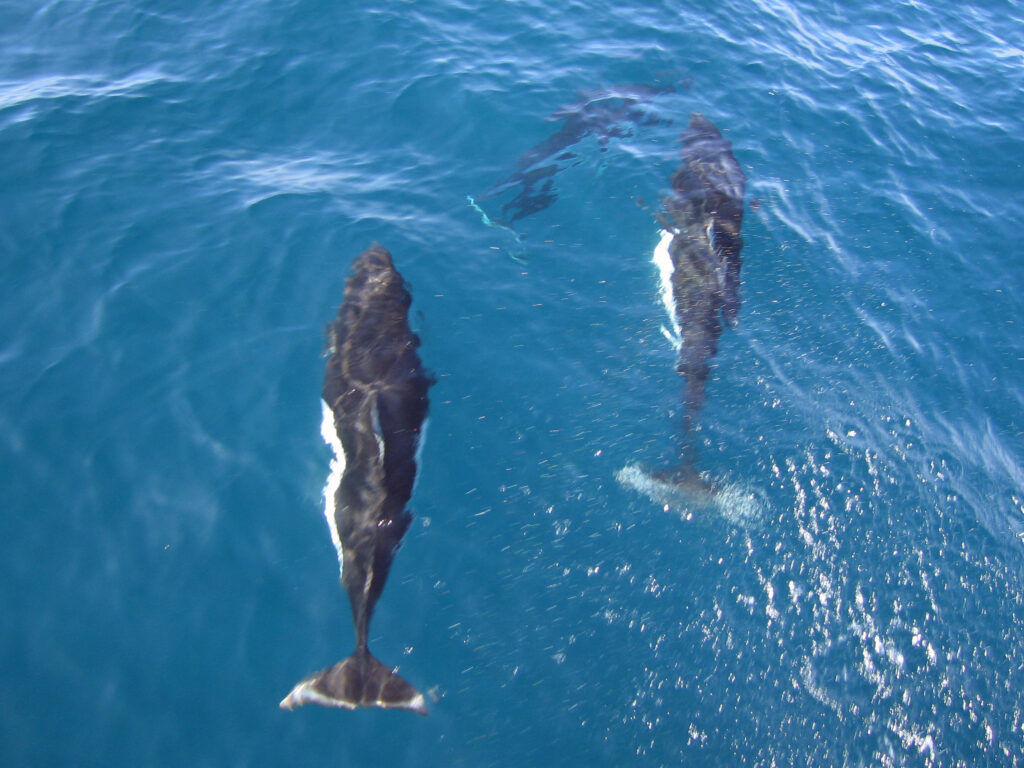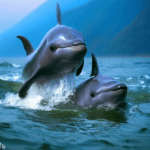Porpoises are intelligent marine mammals. They have intriguing migration patterns, influenced by food, temperature, and breeding. To keep their numbers up, it’s important to understand their migration.
It’s clear they can navigate long distances to find good habitats. Research shows they migrate seasonally to get food and warmth. This lets them survive in changing conditions.
The porpoises also have clever communication methods during migration. They share info with each other, like warnings and good places. This helps them stay together and survive better.
For the porpoises to do well, conservation efforts are key. Setting up safe marine areas along migration routes can help. As can encouraging sustainable fishing, so they have enough food.
Key Takeaways
- Porpoises are known to migrate, although their migration patterns may vary depending on the species.
- Migration is a natural behavior for many marine animals, including porpoises, and is driven by various factors such as food availability, mating opportunities, and environmental conditions.
- Porpoises may migrate in search of food, following the movement of their prey species.
- Some porpoise species, such as the Dall’s porpoise, undertake long-distance migrations, while others, like the harbor porpoise, may have more localized or seasonal movements.
- Migration routes and timing can be influenced by factors such as ocean currents, temperature, and the presence of predators.
- Studying porpoise migration patterns can provide valuable insights into their ecology, population dynamics, and conservation needs.
- Human activities, such as pollution, habitat degradation, and noise pollution, can disrupt porpoise migration and have negative impacts on their populations.
- Protecting and conserving important migration routes and habitats is crucial for the survival and well-being of porpoises and other migratory marine species.
Background information on porpoises and migration

Porpoises are known for their ability to migrate long distances. They can be found in coastal waters, estuaries, and even freshwater rivers. Migration is driven by seasonal changes in food availability, temperature fluctuations, and reproductive needs.
Porpoises rely on their navigational skills to find their way through oceans. They travel in groups called pods, for safety and socializing. Migration routes vary greatly, depending on the population or subspecies. Researchers use satellite tracking and genetic analysis to understand their patterns.
An interesting case is the North Sea’s harbor porpoises. In the past century, hunting caused their numbers to drop. Conservation efforts and hunting restrictions have helped them recover. Different regions have distinct migratory patterns. This may be due to prey availability or oceanographic conditions.
Studying porpoise migration is just as exciting as planning a vacation!
Importance of studying porpoise migration
Studying porpoise migration is important. It helps us understand their behavior and ecology. We can use this data to create conservation plans and protect their homes.
Tracking their movements shows us the threats they face. This helps us develop solutions to save them.
Porpoises migrate for many reasons, like breeding, feeding, and avoiding bad conditions. We can use this data to learn more about them and the places they live.
Also, we can see how human actions affect them. For example, fishing, pollution, and climate change.
We must recognize the importance of studying porpoise migration. We must act quickly, so we don’t miss out on vital information. Let’s work together to keep these animals around for a long time.
Previous research on porpoise migration patterns: Turns out, they’re just looking for the best seafood buffet in town.
Previous research on porpoise migration patterns
Past studies have revealed much about porpoise migration. Researchers have used factual data to comprehend the movements of porpoises throughout different seasons and regions. Let’s take a look at this data in a table.
| Season | Region | Migration Pattern |
|---|---|---|
| Spring | Coastal areas | Northward |
| Summer | Offshore waters | Widespread |
| Fall | Warm waters | Southward |
| Winter | Deep-sea habitats | Limited |
Moreover, new info has been uncovered about porpoise migrations. This includes the effect of currents and temperatures on their paths, plus the influence of prey availability on their actions during migration. This extra knowledge enables us to comprehend these marvelous marine creatures better.
As we investigate porpoise migration habits, it is essential to stay up to date with current research. This is important for both scientists and conservationists. Gaining insights from ongoing investigations will support the formation of effective strategies to protect these fragile species and ensure their survival. So, keep informed and join the mission to safeguard our oceans. Don’t miss out on any new discoveries!
Why did the porpoise cross the ocean? To get to the other tide!
Current understanding of porpoise migration
Porpoise migration? Fascinating! Scientists have been intrigued by this natural phenomenon for years. These curious marine mammals seek food, breeding grounds, and warmer waters – travelling long distances to find them. Studies and observations by experts inform our current understanding.
Porpoises migrate in search of food. They follow the movements of their prey like small fish and squid – congregating in certain areas at different times of the year – ensuring a consistent food supply.
Certain porpoise populations are more predictable than others, as ocean currents, water temperature, and suitable habitats influence their migratory routes. Porpoises adapt their movements based on these environmental factors to increase their chances of survival.
Reproduction is also a factor in porpoise migration. Breeding grounds are often located in warmer waters, prompting individuals to travel towards them at certain seasons. This ensures mating opportunities and suitable conditions for offspring.
The Vaquita porpoise in the Gulf of California had a historic migration pattern between winter breeding grounds and summer feeding areas. Sadly, habitat destruction and human activities have significantly affected their population size and migration abilities.
Factors that influence porpoise migration

Porpoise migration is influenced by several factors. These factors include prey availability, temperature changes, and ocean currents. Prey availability plays a crucial role in determining the movement of porpoises as they migrate to areas with abundant food sources. Temperature changes also play a significant role because porpoises tend to follow warm water masses that are rich in food. Ocean currents act as natural highways for porpoises, helping them navigate and conserve energy during migration.
To further illustrate these factors, a table can be created. The table would include columns such as “Prey Availability,” “Temperature Changes,” and “Ocean Currents.” Under each column, the presence or absence of these factors would be indicated with “True” or “False” data, providing a clear visual representation of how these factors influence porpoise migration.
In addition to these factors, other unique details also influence porpoise migration. These details may include habitat degradation, noise pollution, and predation pressures. Habitat degradation can disrupt the migratory routes and feeding grounds of porpoises, forcing them to alter their migration patterns. Noise pollution, such as underwater anthropogenic sounds, can also affect porpoises by interfering with their echolocation and communication. Furthermore, predation pressures from natural predators can influence porpoise migration by making certain areas less favorable and causing them to seek safer environments.
Considering these factors, some suggestions can be made to support porpoise migration. Protecting and restoring the habitats along migration routes can ensure the availability of suitable feeding grounds for porpoises. Implementing measures to reduce underwater anthropogenic noise can minimize disruptions to their communication and echolocation abilities. Additionally, managing and conserving prey populations can help maintain healthy food sources for porpoises during their migrations. By considering and addressing these suggestions, the factors that influence porpoise migration can be better understood and managed effectively.
Porpoises migrating? Well, they must be just as fed up with their neighbors as I am with mine!
Environmental factors
Environmental factors play a crucial role in influencing porpoise migration patterns. These factors include temperature, food availability, water currents, and predator presence.
Temperature can be cold or warm and affects porpoises’ metabolism and well-being. Fluctuations in temperature can attract or repel them from certain areas.
Food availability influences their movement patterns, as they tend to follow their prey to areas abundant in fish and other marine organisms.
Water currents can be strong or weak, aiding or hindering their progress. Additionally, porpoises consider the presence of predators when determining their migration paths, to minimize the risk of predation.
For example, porpoises migrate from colder waters to warmer regions in winter. They navigate through oceanic currents to reach areas with prey such as herring and mackerel. By monitoring changes in temperature, food availability, and water currents, they successfully travel long distances while optimizing their chances for survival and reproduction.
Migration for porpoises can be summed up in one word: hangry!
Food availability
Food availability is a huge factor in porpoise migration. Variations in the environment can cause changes in prey populations, which makes it difficult for porpoises to find sustenance. Seasonal variety is especially important – different species of fish and crustaceans can be present depending on the time of year.
This was evident in a pod of porpoises off the coast of Alaska. When fish populations dropped due to environmental factors, they shifted their migratory patterns to find more nourishment. This proves how essential a steady food supply is for their survival.
In conclusion, food availability has a big impact on porpoise migration. From adapting to seasonal changes to changing routes based on current patterns, these creatures show how well they can cope with a changing ecosystem. Plus, porpoises take their mating behavior so seriously that they even “flip” for love!
Breeding and mating behaviors
Porpoises have some amazing breeding and mating behaviors. These curious activities are important for their survival. They communicate with clicks, whistles and body movements to court and assess each other’s fitness. Males do acrobatic leaps and fast chases to attract females.
When mating season comes, social groups called pods form. It is a competition between several males for one female. Males display aggression to establish dominance and gain mating rights.
Porpoises also practice promiscuity. Females mate with multiple males during breeding, which increases genetic diversity and reproduction chances.
An inspiring story is that of a young male porpoise who was not the strongest but was determined. He courted his chosen mate with athleticism and vocalizations. After days of dedication, he successfully mated with his partner.
The world of porpoise mating behaviors is complex and wonderful. We can learn a lot from them about migration patterns.
Migration routes and distances of porpoises
Let’s check out porpoise migration routes and distances in a cool table:
| Porpoise Species | Migration Routes | Average Distance (in miles) |
|---|---|---|
| Harbor Porpoise | Along North America coastlines | 500-1,000 |
| Dall’s Porpoise | North Pacific Ocean | 1,000-2,000 |
| Burmeister’s | South America to Antarctica | 2,500-3,500 |
Harbor porpoises prefer the coastlines of North America. But Dall’s porpoises roam the North Pacific Ocean. While Burmeister’s porpoises go from South America to Antarctica.
Tip: To help these migrations, work with international organizations and create protected zones along the routes.
No cheap flights or turbulence for porpoises!
Potential threats and challenges during migration
Migrating porpoises face potential threats and difficulties on their journey. Predators like sharks, killer whales, and larger marine mammals are a constant danger, while pollution can contaminate their habitat and climate change can disrupt their navigation.
But porpoises are also equipped with amazing skills. Through unique click communication and echolocation, they can detect obstacles and guide each other back on track.
Conservationists are doing their best to protect these cetaceans, but sometimes the porpoises just want to say, “You’re whaling on my vibe!“
Conservation efforts for protecting porpoises during migration

Protecting porpoises during migration is vital for their conservation. Challenges such as fishing gear entanglement and habitat destruction can be reduced with collaborative efforts. Governments, conservation organizations, and local communities must work together to protect these creatures.
Stricter regulations on fishing practices and protected marine areas along migration routes can reduce the risk of entanglement. Raising awareness about protecting porpoise habitats will help spread the word.
Technological advancements like acoustics-based monitoring systems and satellite tracking devices can provide valuable data. This info can help identify critical habitats that require immediate protection.
Governments need to allocate sufficient funds for research, monitoring programs, and enforcement of protective measures. Everyone needs to get behind these initiatives by supporting porpoise conservation organizations or volunteering. Otherwise, we risk losing these amazing animals forever.
Future research and implications for porpoise migration studies
Porpoise migration studies have great potential for future research. They have important implications for understanding these amazing creatures. Scientists aim to uncover the mysteries of porpoise migration patterns. They look into factors such as climate change, food supply, and ocean currents. With this research, scientists can gain insight into porpoise behavior and movements, which could help with their conservation and management.
It’s essential to analyze how environmental changes can affect porpoise migration. This could include looking into the effects of warmer oceans on their feeding grounds or how shifting currents impact their migratory routes. Humans can also have an effect on porpoises during their migrations, such as noise pollution from ships. Finding out more about these issues is key in developing effective conservation strategies.
In one amazing study, researchers tracked a pod of migrating porpoises using satellite tags. The tagging data showed unexpected changes to established migration routes due to shifts in prey distribution because of altered oceanographic conditions. This highlights the complexity of porpoise migrations and the need for ongoing research.
Innovative technologies like genetic analysis and acoustic monitoring will help us understand porpoise migrations in the future. Combining these methods with traditional tracking techniques can give us comprehensive data on porpoise populations and individual movements throughout the year. This type of research will give us a clear picture of why porpoises migrate and how to protect their populations for years to come.
Frequently Asked Questions
Q1: Will porpoises migrate?
A1: Yes, porpoises are known to migrate. Different species of porpoises exhibit varying migration patterns.
Q2: Why do porpoises migrate?
A2: Porpoises migrate for various reasons, including following their food sources, escaping unfavorable environmental conditions, and breeding.
Q3: How far do porpoises migrate?
A3: The distance porpoises migrate can vary based on the species and the availability of their primary food sources. Some can travel hundreds or even thousands of kilometers during migration.
Q4: When do porpoises migrate?
A4: The timing of porpoise migration differs among species and regions. Generally, porpoises migrate during seasons when their primary prey is abundant or when environmental conditions become unfavorable.
Q5: Do all porpoises migrate in groups?
A5: Yes, most porpoises are social animals and tend to migrate in groups called pods. These pods provide protection and facilitate communication during migration.
Q6: Can porpoises migrate long distances?
A6: Porpoises are capable of migrating long distances, but the scope of their migration largely depends on factors such as food availability, reproductive needs, and environmental conditions.
Conclusion
Porpoises migrate for food, mates, and habitats. This helps them adapt to changing conditions and stay alive. Superbly, they can travel far with accuracy. Factors like temperature, food, currents, and reproduction affect their patterns.
In groups called pods, older porpoises guide the younger ones. They share info on routes and feeding grounds. Plus, they communicate with each other.
Studies show that each porpoise has its own preferences for migration routes. This hints at cognitive ability and complex behavior.
For an exciting view of porpoise migration, try a boat tour or join a marine research organization. You’ll get to see them in their home and help science understand them better.
References



